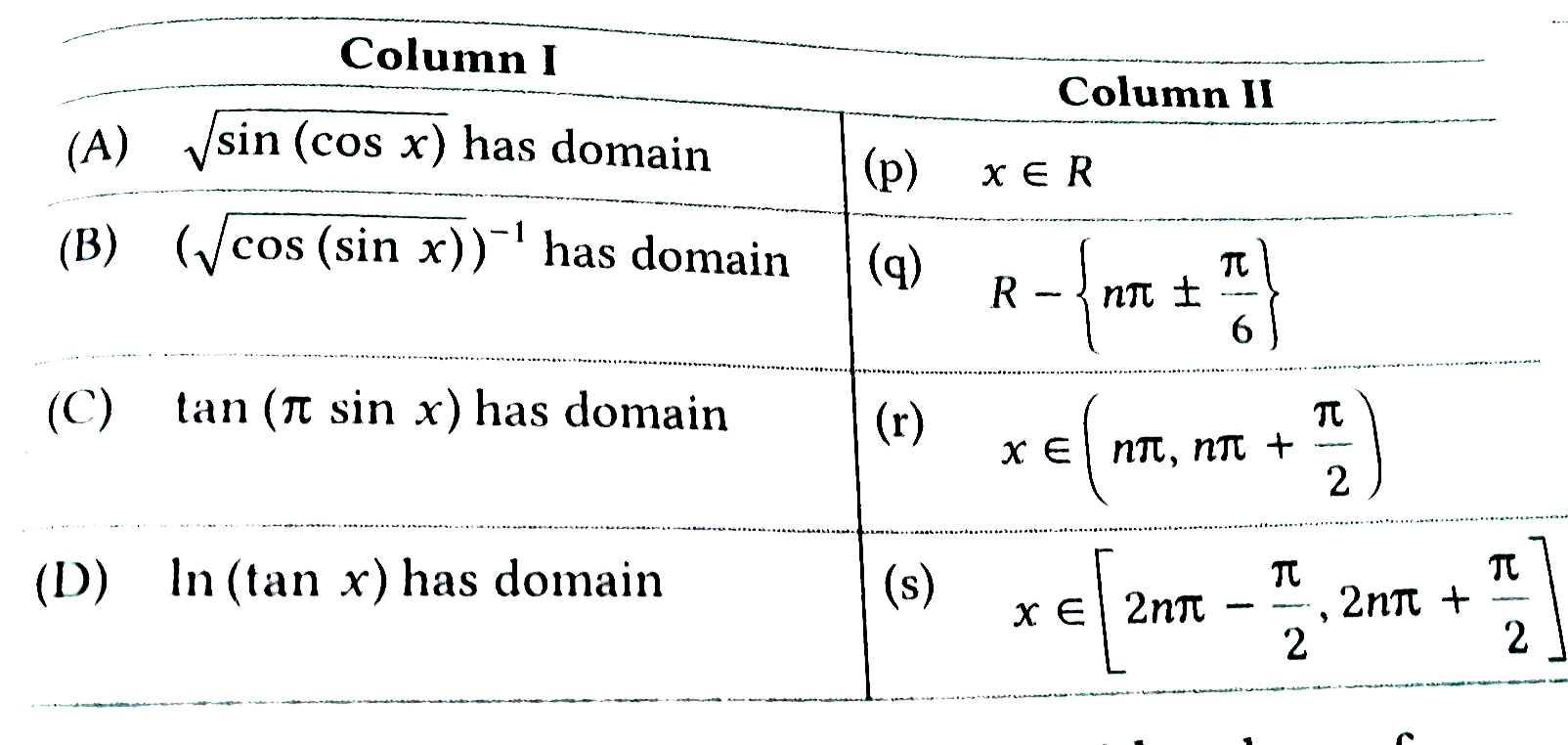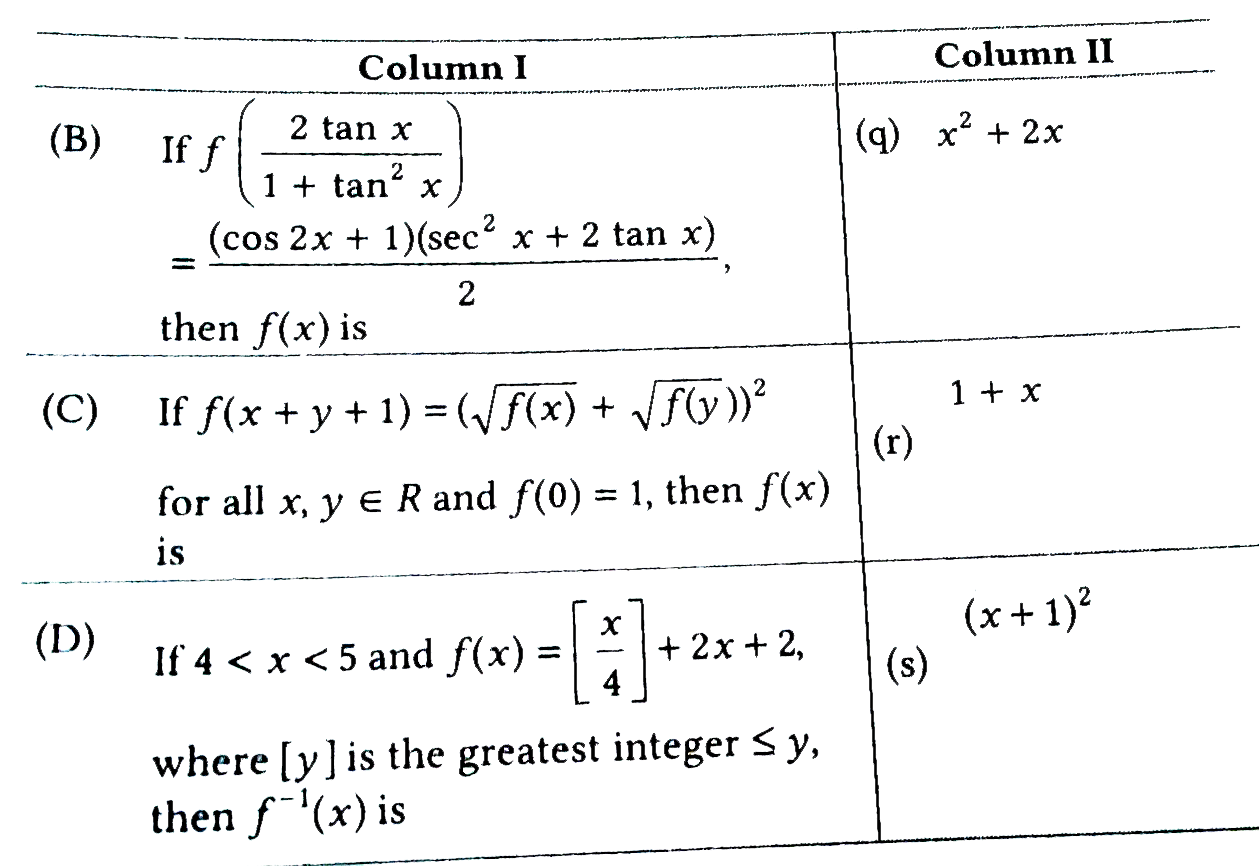Let P(x) be a polynomial of degree at most 5 which leaves remainders −1 and 1 upon divison by (x−1)3 and (x+1)3, respectively.
The sum of pairwise product of all roots ( real and complex) of P(x)=0 is
−1√3
0
1√3
1
The correct Answer is:c
Step by step video solution for Let P(x) be a polynomial of degree at most 5 which leaves remainders -1 and 1 upon divison by (x-1)^(3) and (x+1)^(3), respectively. The sum of pairwise product of all roots ( real and complex) of P(x)=0 is by Maths experts to help you in doubts & scoring excellent marks in Class 12 exams.
Updated on:21/07/2023Topper's Solved these Questions
- FUNCTIONSBOOK - ARIHANT MATHS ENGLISHCHAPTER - FUNCTIONSEXERCISE - Exercise (Matching Type Questions)
2 Videos
- FUNCTIONSBOOK - ARIHANT MATHS ENGLISHCHAPTER - FUNCTIONSEXERCISE - FUNCTION EXERCISE 5: Matching Type Questions
2 Videos
- FUNCTIONSBOOK - ARIHANT MATHS ENGLISHCHAPTER - FUNCTIONSEXERCISE - Exercise (Statement I And Ii Type Questions)
11 Videos
- ESSENTIAL MATHEMATICAL TOOLS BOOK - ARIHANT MATHS ENGLISHCHAPTER - ESSENTIAL MATHEMATICAL TOOLS EXERCISE - Exercise (Single Integer Answer Type Questions)
3 Videos
- GRAPHICAL TRANSFORMATIONSBOOK - ARIHANT MATHS ENGLISHCHAPTER - GRAPHICAL TRANSFORMATIONSEXERCISE - Exercise (Questions Asked In Previous 13 Years Exam)
10 Videos
Similar Questions
Match the statements of Column I with values of Column II.

View SolutionMatch the statements of Column I with values of Column II.


View SolutionStatement I The function f(x) =xsinx and f'(x)=xcosx+sinx are both non-periodic.
Statement II The derivative of differentiable functions (non-periodic) is non-periodic funciton.
View SolutionThe number of solutions of the equation |x−1|−|2x−5|=2x
View SolutionFind the number of solutions of the equation x21−|x−2|=1, graphically.
View SolutionLet p(x) be a real polynomial of least degree which has a local maximum at x=1 and a local minimum at x=3. If p(1)=6 and p(3)=2, then p'(0) is
View SolutionLet p(x) be a quadratic polynomial suchthat p(0)=1. If p(x) leaves remainder 4 when divided by x-1 and it leaves remainder 6 when divided by x+1; then
View Solutionp(x) be a polynomial of degree at most 5 which leaves remainder -1and 1upon division by (x-1)^(3) and (x+1)^(3) respectively,the number of real roots of P(x)=0 is
View SolutionLet P(x) be a polynomial such that P(1)=1 and (p(2x))/(p(x+1))=8-(56)/(x+7) for all real x for which both sides are defined.The degree of P(x) is
View SolutionLet P(x) be a polynomial of degree 11 such that P(x)=1x+1 for x=0,1,2,3,….11. The value of P(12) is.
View SolutionA polynomial of degree 2 in x , when divided by (x+1),(x+2)and(x+3), leaves remainders 1 , 4 and 3 respectively . Find the polynomial.
View SolutionLet P(x) be polynominal of degree atmost 5 which leaves remainders -1 and 1 upon division by (x−1)3 and (x+1)3, respectively.
The maximum value of y=p''(x) can be obtained at x is equal to
View SolutionP(x) be połynomial of degree at most 5 which leaves remainders -1 and 1 upon division by (x−1)3 and (x+1)3 respectively.
The sum of pairwise product of all roots (real and complex) of P(x) = 0 is
View Solutionp(x) be a polynomial of degree at most 5 which leaves remainder - 1 and 1 upon division by (x−1)3 and (x+1)3respectively, the number of real roots of P(x)=0 is (a) 1 (b) 3 (c) 5 (d)2
View Solutionp(x) be a polynomial of degree at most 5 which leaves remainder - 1 and 1 upon division by (x−1)3 and (x+1)3respectively, the number of real roots of P(x)=0 is
View SolutionLet P(x) be a real polynomial of degree 3 which vanishes at x=-3. Let P(x) have local minima at x=1, local maximum at x=-1 and 1∫−1P(x)dx=−18, then the sum of all the coefficients of the polynomical P(x) is equal to........
View Solution

